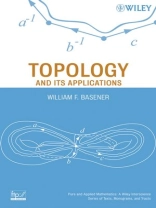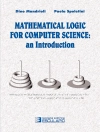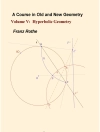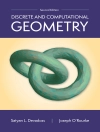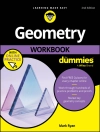Discover a unique and modern treatment of topology employing a
cross-disciplinary approach
Implemented recently to understand diverse topics, such as cell
biology, superconductors, and robot motion, topology has been
transformed from a theoretical field that highlights mathematical
theory to a subject that plays a growing role in nearly all fields
of scientific investigation. Moving from the concrete to the
abstract, Topology and Its Applications displays both the beauty
and utility of topology, first presenting the essentials of
topology followed by its emerging role within the new frontiers in
research.
Filling a gap between the teaching of topology and its modern
uses in real-world phenomena, Topology and Its Applications is
organized around the mathematical theory of topology, a framework
of rigorous theorems, and clear, elegant proofs.
This book is the first of its kind to present applications in
computer graphics, economics, dynamical systems, condensed matter
physics, biology, robotics, chemistry, cosmology, material science,
computational topology, and population modeling, as well as other
areas of science and engineering. Many of these applications are
presented in optional sections, allowing an instructor to customize
the presentation.
The author presents a diversity of topological areas, including
point-set topology, geometric topology, differential topology, and
algebraic/combinatorial topology. Topics within these areas
include:
* Open sets
* Compactness
* Homotopy
* Surface classification
* Index theory on surfaces
* Manifolds and complexes
* Topological groups
* The fundamental group and homology
Special ‘core intuition’ segments throughout the book briefly
explain the basic intuition essential to understanding several
topics. A generous number of figures and examples, many of which
come from applications such as liquid crystals, space probe data,
and computer graphics, are all available from the publisher’s Web
site.
Daftar Isi
Preface.
Introduction.
I. 1 Preliminaries.
1.2 Cardinality.
1. Continuity.
1. 1 Continuity and Open Sets in R¯n.
1.2 Continuity and Open Sets in Topological Spaces.
1.3 Metric, Product, and Quotient Topologies.
1.4 Subsets of Topological Spaces.
1.5 Continuous Functions and Topological Equivalence.
1.6 Surfaces.
1.7 Application: Chaos in Dynamical Systems.
1.7.1 History of Chaos.
1.7.2 A Simple Example.
1.7.3 Notions of Chaos.
2. Compactness and Connectedness.
2.1 Closed Bounded Subsets of R.
2.2 Compact Spaces.
2.3 Identification Spaces and Compactness.
2.4 Connectedness and path-connectedness.
2.5 Cantor Sets.
2.6 Application: Compact Sets in Population Dynamics and
Fractals.
3. Manifolds and Complexes.
3.1 Manifolds.
3.2 Triangulations.
3.3 Classification of Surfaces.
3.3.1 Gluing Disks.
3.3.2 Planar Models.
3.3.3 Classification of Surfaces.
3.4 Euler Characteristic.
3.5 Topological Groups.
3.6 Group Actions and Orbit Spaces.
3.6.1 Flows on Tori.
3.7 Applications.
3.7.1 Robotic Coordination and Configuration Spaces.
3.7.2 Geometry of Manifolds.
3.7.3 The Topology of the Universe.
4. Homotopy and the Winding Number.
4.1 Homotopy and Paths.
4.2 The Winding Number.
4.3 Degrees of Maps.
4.4 The Brouwer Fixed Point Theorem.
4.5 The Borsuk-Ulam Theorem.
4.6 Vector Fields and the Poincare’ Index Theorem.
4.7 Applications I.
4.7.1 The Fundamental Theorem of Algebra.
4.7.2 Sandwiches.
4.7.3 Game Theory and Nash Equilibria.
4.8 Applications 1I: Calculus.
4.8.1 Vector Fields, Path Integrals, and the Winding Number.
4.8.2 Vector Fields on Surfaces.
4.8.3 1ndex Theory for n-Symmetry Fields.
4.9 Index Theory in Computer Graphics.
5. Fundamental Group.
5. I Definition and Basic Properties.
5.2 Homotopy Equivalence and Retracts.
5.3 The Fundamental Group of Spheres and Tori.
5.4 The Seifert-van Kampen Theorem.
5.4.1 Flowers and Surfaces.
5.4.2 The Seifert-van Kampen Theorem.
5.5 Covering spaces.
5.6 Group Actions and Deck Transformations.
5.7 Applications.
5.7.1 Order and Emergent Patterns in Condensed Matter
Physics.
6. Homology.
6.1 A-complexes.
6.2 Chains and Boundaries.
6.3 Examples and Computations.
6.4 Singular Homology.
6.5 Homotopy Invariance.
6.6 Brouwer Fixed Point Theorem for D¯n.
6.7 Homology and the Fundamental Group.
6.8 Betti Numbers and the Euler Characteristic.
6.9 Computational Homology.
6.9.1 Computing Betti Numbers.
6.9.2 Building a Filtration.
6.9.3 Persistent Homology.
Appendix A: Knot Theory.
Appendix B: Groups.
Appendix C: Perspectives in Topology.
C.1 Point Set Topology.
C.2 Geometric Topology.
C.3 Algebraic Topology.
C.4 Combinatorial Topology.
C.5 Differential Topology.
References.
Bibliography.
Index.
Tentang Penulis
WILLIAM F. BASENER, Ph D, is an Assistant Professor in the Department of Mathematics and Statistics at Rochester Institute of Technology in Rochester, New York. He received his Ph D in mathematics in 2001 from Boston University. His research interests include dynamical systems, differential equations, applied topology, economics, and the topology of manifolds. Dr. Basener is the recipient of numerous teaching awards.
